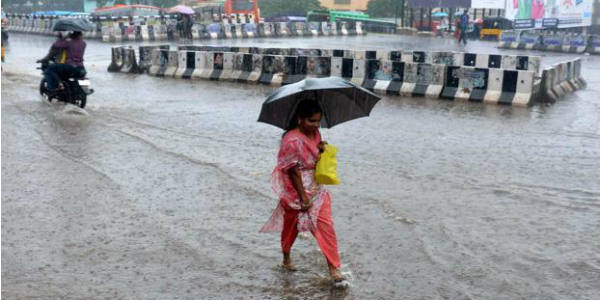Andhra’s south coast, Tamil Nadu to receive heavy rainfall for next few days
By Amritha Mohan
Hyderabad: South coastal Andhra Pradesh and Tamil Nadu is likely to receive heavy rainfall in the coming days, according to weather experts. The heavy rains are a result of the north-east monsoon which has turned active once again over south India. While the north-east monsoon was active till October 31, it had remained subdued due to the weather systems developed by cyclones in the Bay of Bengal and Arabian Sea.
With the rains turning active once again, certain parts in coastal and interior parts of Tamil Nadu and coastal Andhra may gear up for the next set of heavy rainfall.
Mr. Mahesh Palawat, president of SkyMet, a independent weather forecasting agency, has observed that Nellore district in Andhra Pradesh has received a heavy rainfall of 104 mm in the past 24 hours. “In fact, this is the highest rainfall this city has received in a span of 24 hours after the year 2015. Apart from Nellore, places like Arogyavaram and Kavali in particular have also received good rains. These rains may continue on-and-off with varied intensity over coastal Andhra and adjoining parts of Rayalaseema at least for the next few days,” he said.
Upon asking whether northeast monsoon may affect weather in Telangana, the weather expert replied that Telangana and north coastal Andhra will remain dry at least for the next week. “For the next one week or so, we don’t expect any serious activity in Telangana. Monsoon will remain active in Tamil Nadu and some parts of Andhra only only. However, temperatures are expected to drop from November 18. The arrival of northerly north-eastern winds from Western Himalayas may lead to a drop in temperatures as they reach Telangana,” he said.
Meanwhile, coastal and interior parts of Tamil Nadu will continue to get good rains from the next few days, due to the effect of northeast monsoon. Light rains are also expected over interior Karnataka, parts of Bengaluru and some parts of Kerala. The formation of this weather system is primarily due to the degeneration of the latest cyclone Bulbul and the subsequent activity of northeast monsoon, which will sustain for around a week.